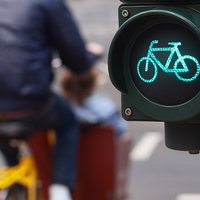What happens when you remove a car lane to put in a new bicycle lane? Or you give pedestrians more time to cross a busy road? FLOW published a new collection of Quick Facts from cities who measured the impact pedestrian and cyclist measures have on congestion.
The CIVITAS FLOW project has collected 15 Quick Facts to provide cities with evidence of how walking and cycling measures can not only improve conditions for pedestrians and cyclists, but also reduce congestion. The Horizon 2020 FLOW project conducted a survey which shows that nearly half of European political and administrative decision makers worry about congestion when introducing walking and cycling measures. However, there is growing evidence that walking and cycling measures can actually help reduce congestion in cities. The FLOW Quick Facts describe some surprising results about overall transport efficiency that has been achieved while improving conditions for walking and cycling. The Quick Facts are available for free download in English, Bulgarian, Gaelic, German, Hungarian, Polish, and Portuguese.


